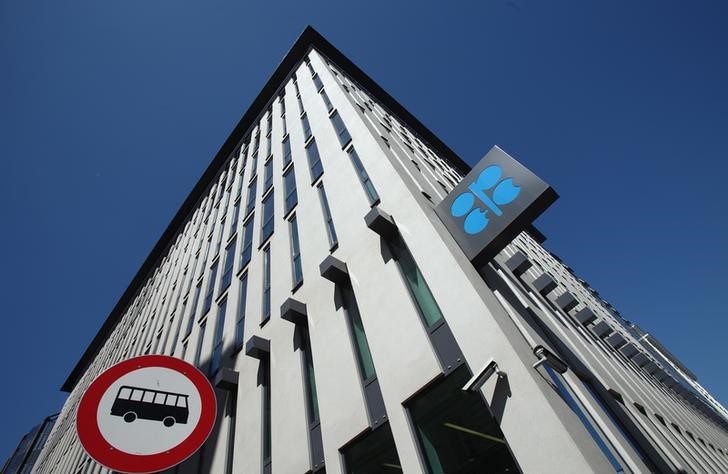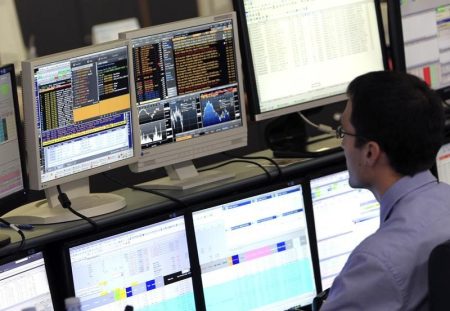© Reuters. FILE PHOTO: Crude oil storage tanks are seen in an aerial photograph at the Cushing oil hub in Cushing, Oklahoma, U.S. April 21, 2020. REUTERS/Drone Base/File Photo
By Natalie Grover
LONDON (Reuters) -Oil prices edged lower following a protracted rally, but retained support from pledges by top producers Saudi Arabia and Russia to extend supply cuts through September.
Both global benchmarks notched up their sixth consecutive weekly gains last week.
On Monday, futures slipped 68 cents to $85.56 a barrel by 1256 GMT, while U.S. West Texas Intermediate crude was at $82.15 a barrel, down 67 cents. Both benchmarks dipped by $1 earlier in the session.
Prices are down as traders book some profits, analysts said.
That may be linked to the lack of any serious damage to infrastructure in Russia’s naval base at Novorossiysk, after another Ukrainian drone attack, said Tamas Varga of oil broker PVM.
The port handles 2% of the world’s oil supply. Risks to oil supply could increase as Russia-Ukraine tensions heighten in Black Sea ports.
“But given the voluntary extension of supply cuts…the base case scenario is that we will see a deficit in the market, which is going to continue to push oil prices higher,” added Naeem Aslam, chief investment officer at Zaye Capital Markets.
The world’s top exporter Saudi Arabia on Thursday extended its voluntary production cut of 1 million barrels per day (bpd) to the end of September, and said more could follow.
In line with production cuts, Saudi Aramco (TADAWUL:) raised on Saturday the official selling prices for most grades it sells to Asia for a third month in September.
Russia added to the supply tightness with its announcement it will cut oil exports by 300,000 bpd in September.
Given these additional cuts and estimates of significant depletion in oil inventories in the coming months, PVM’s Varga said “the fundamental backdrop becomes blatantly encouraging”.
Chinese economic data this week, however, will be in focus as the market seeks to gauge Beijing’s appetite for more stimulus measures to support the world’s second-largest economy.
Investors will also monitor the U.S. consumer price reading on Thursday that could offer clues on the Federal Reserve’s monetary policy.
On Monday, U.S. Federal Reserve Governor Michelle Bowman said additional interest rate hikes will likely be needed to lower inflation to meet the Fed’s 2% target.
Read the full article here









